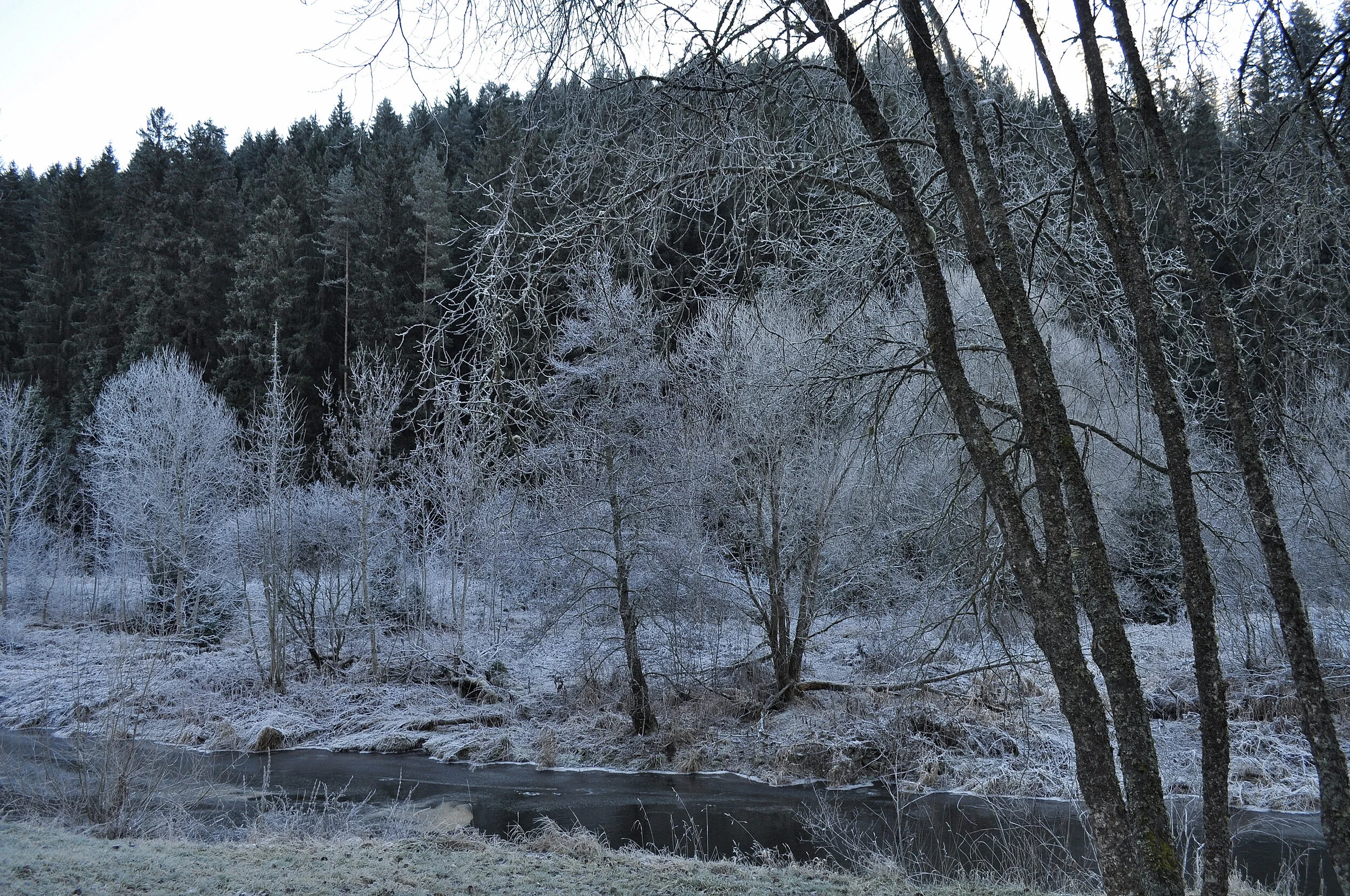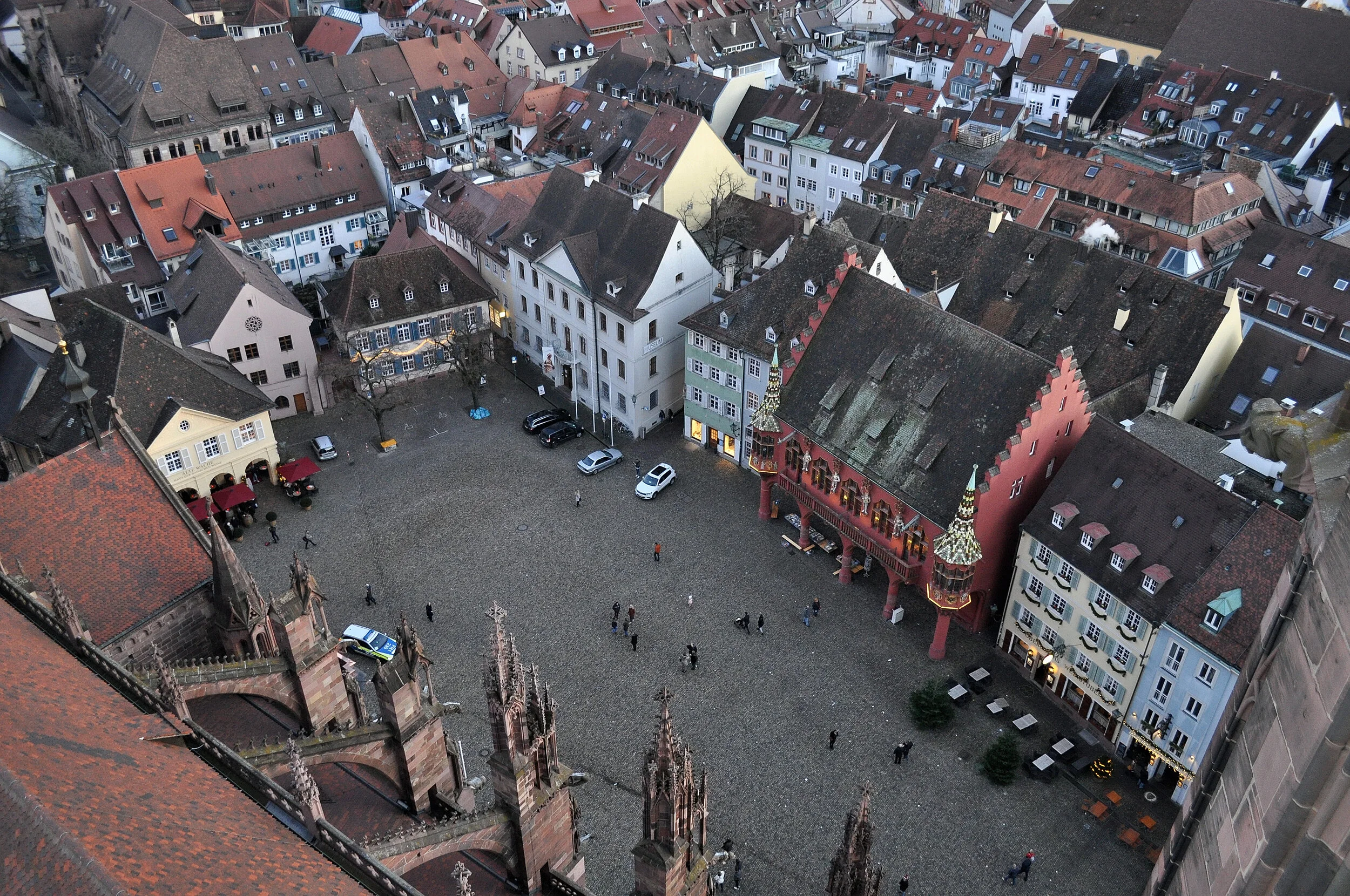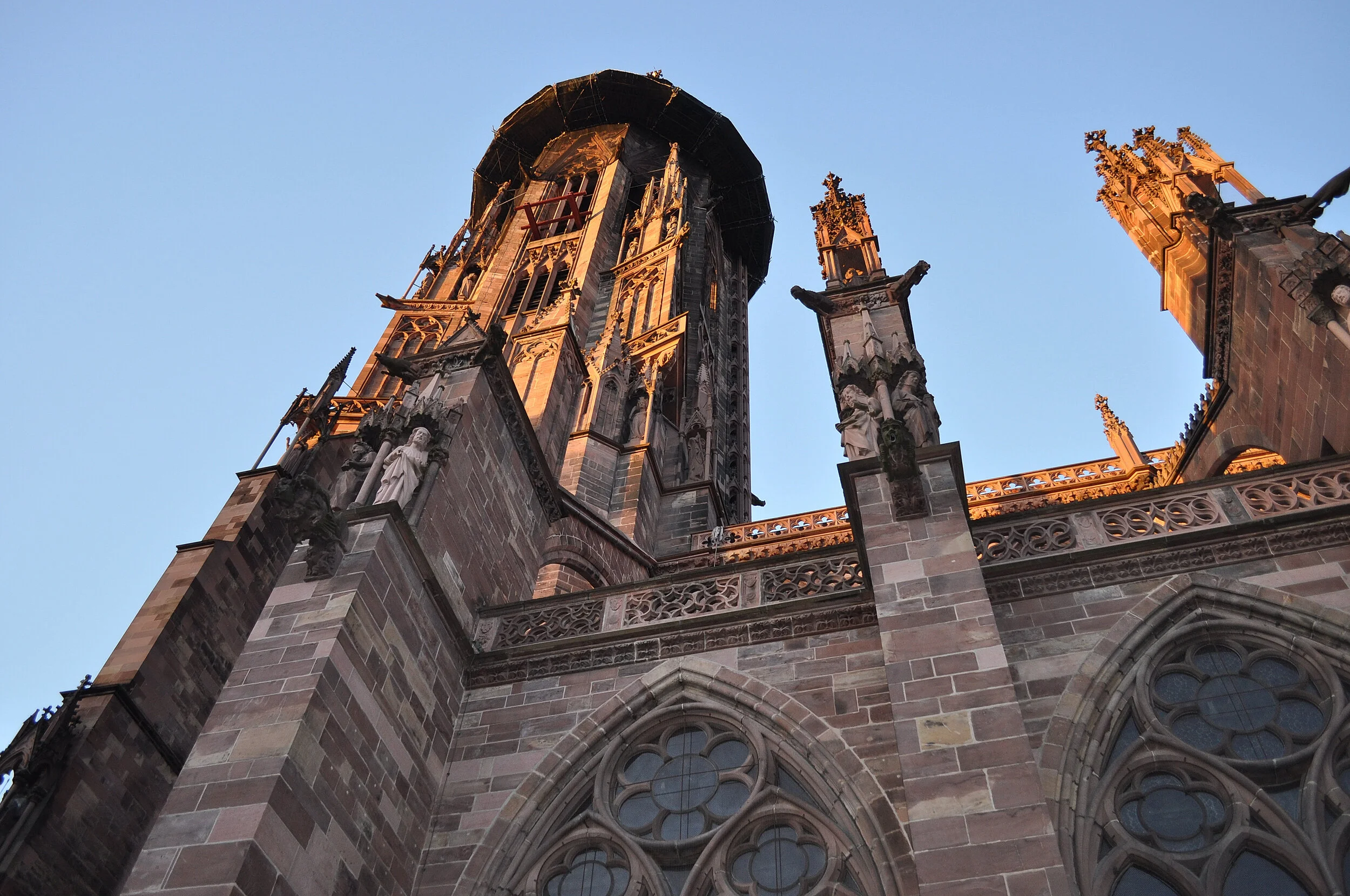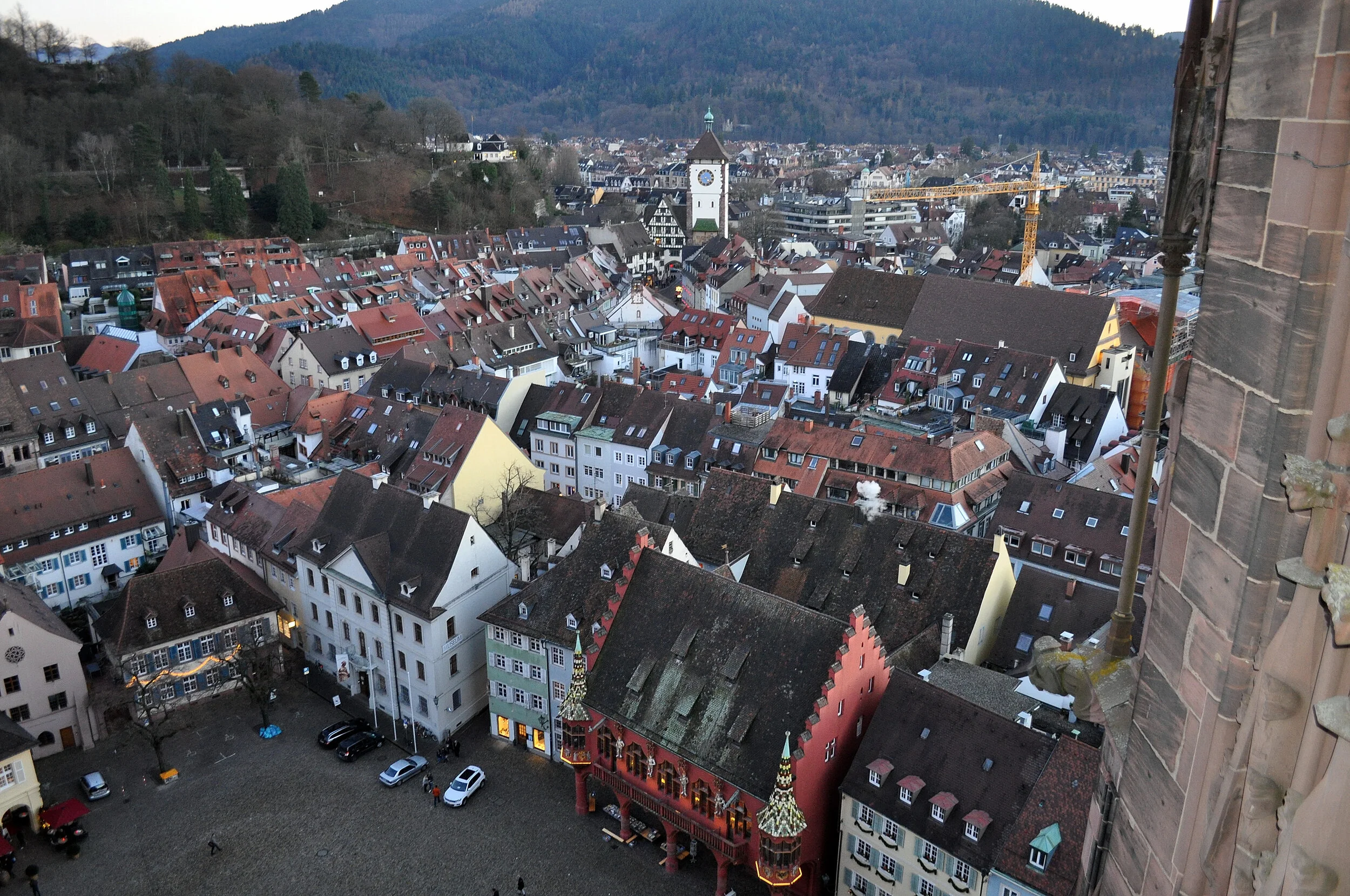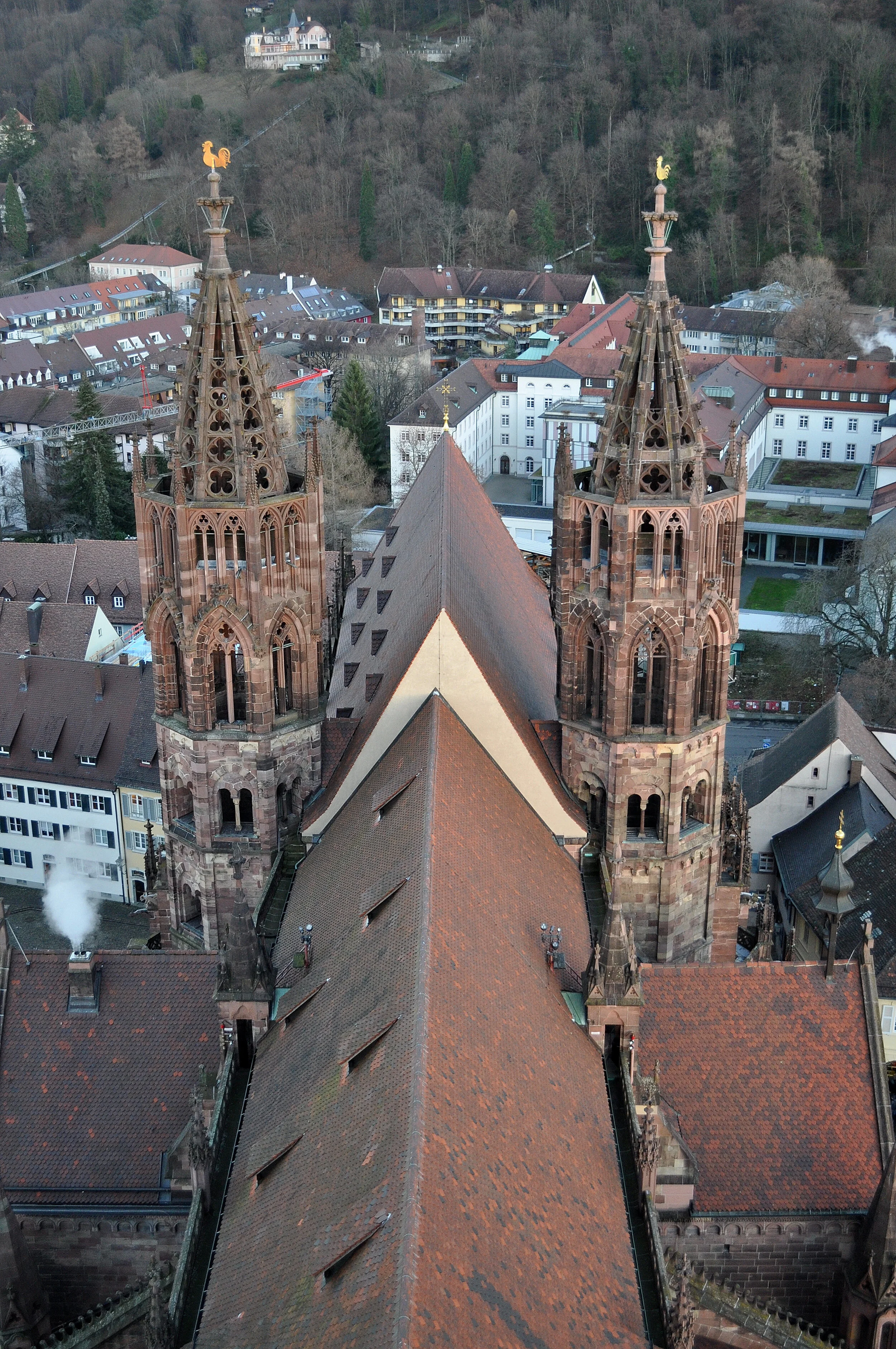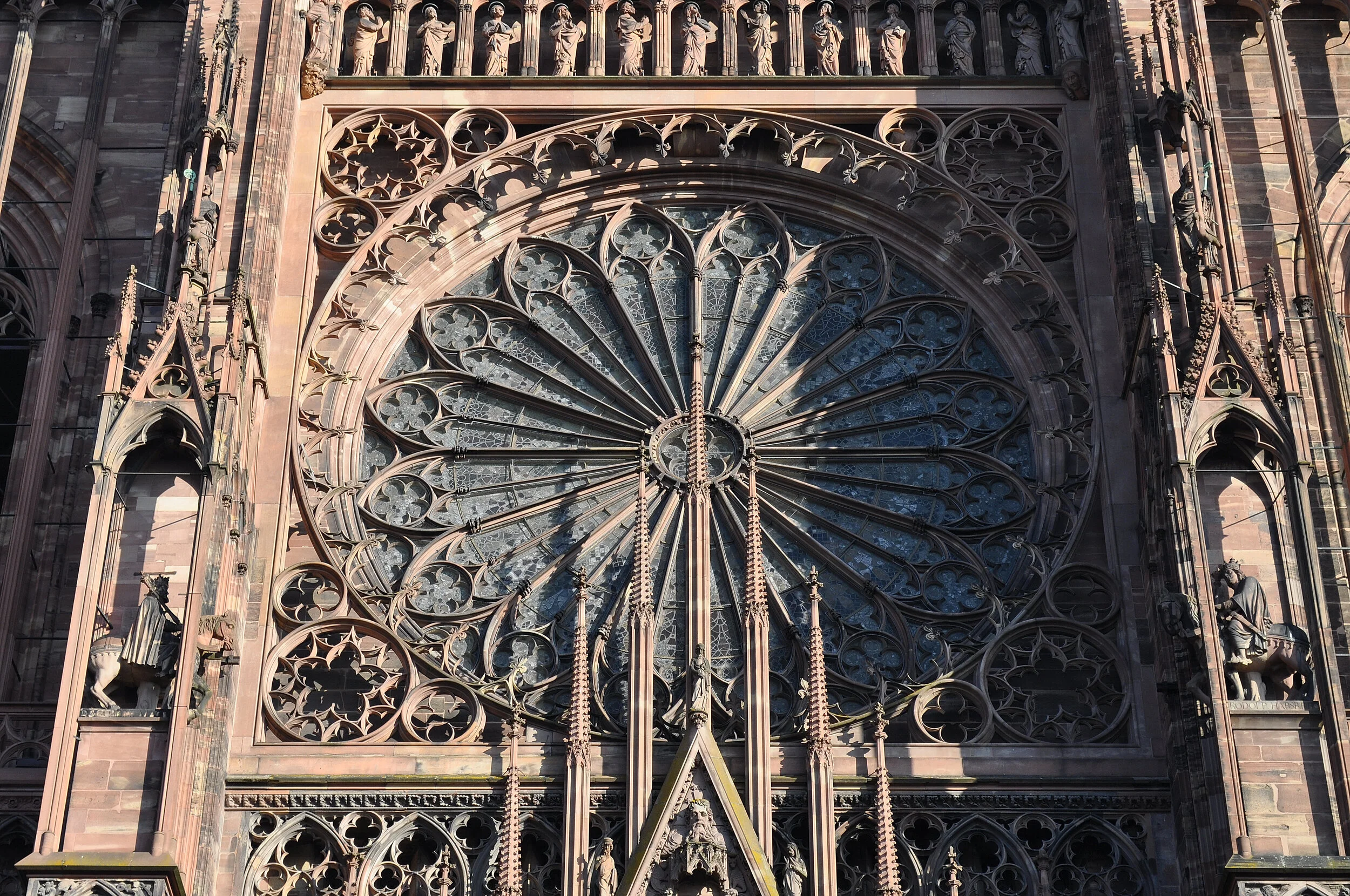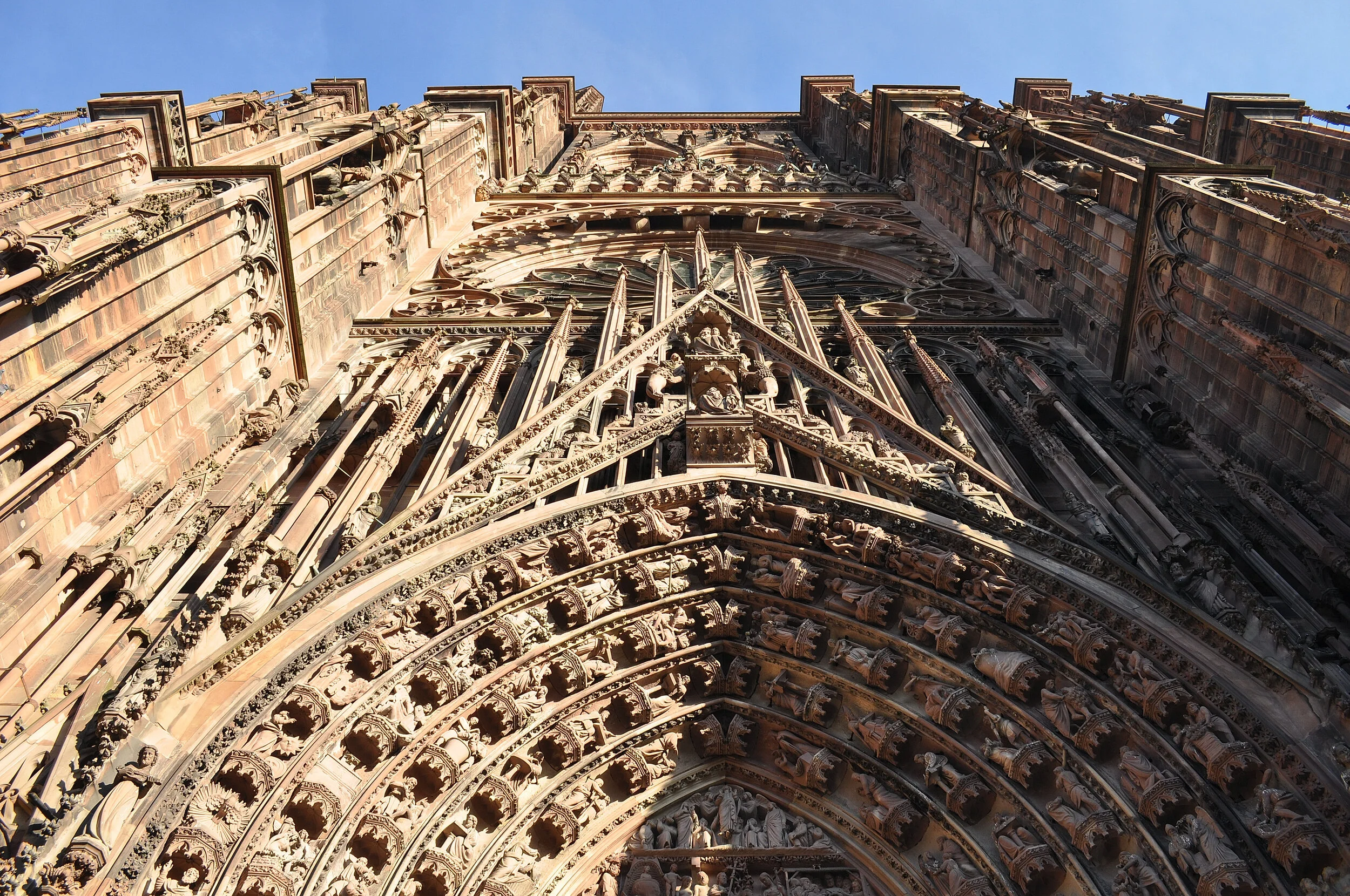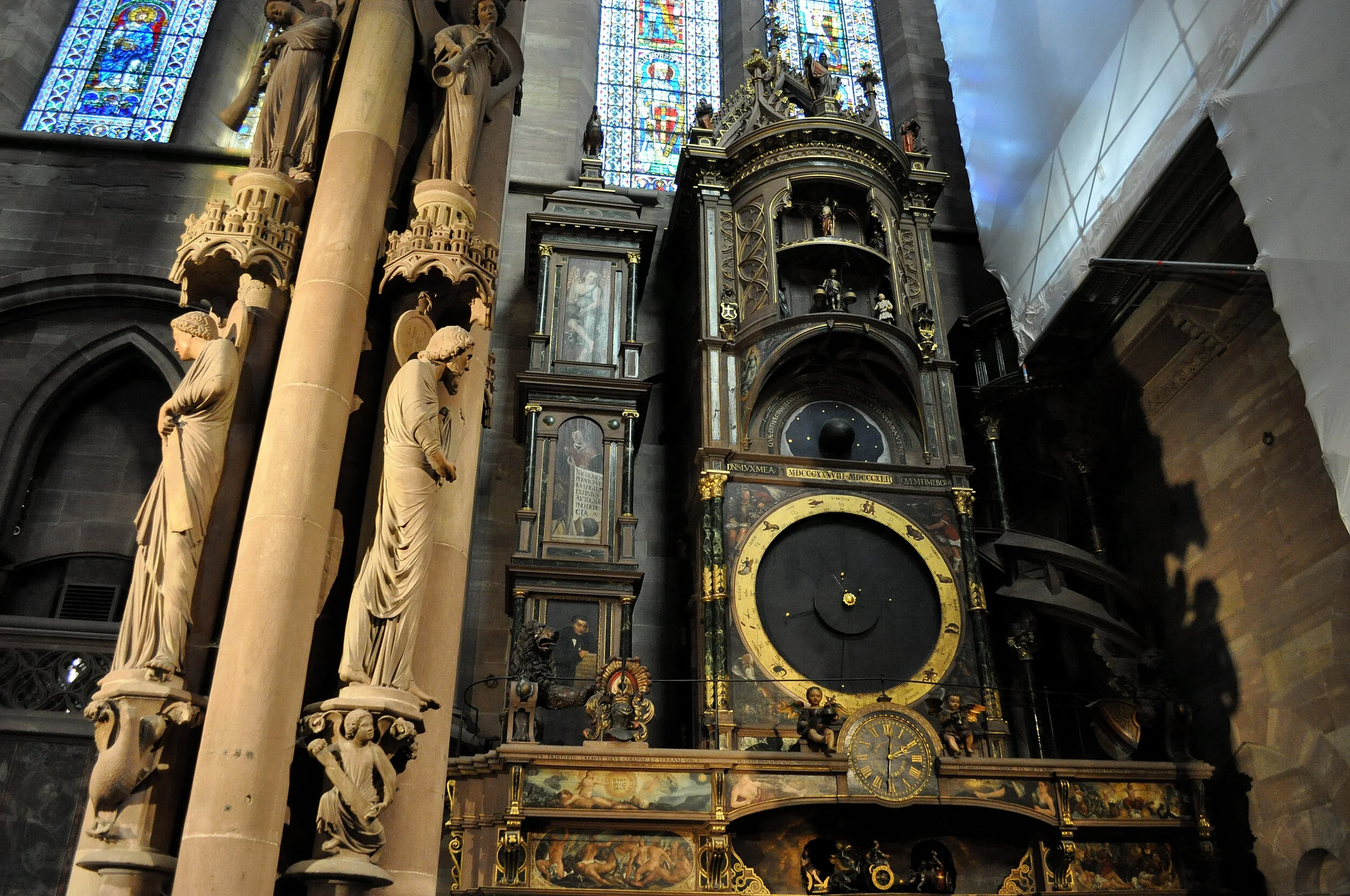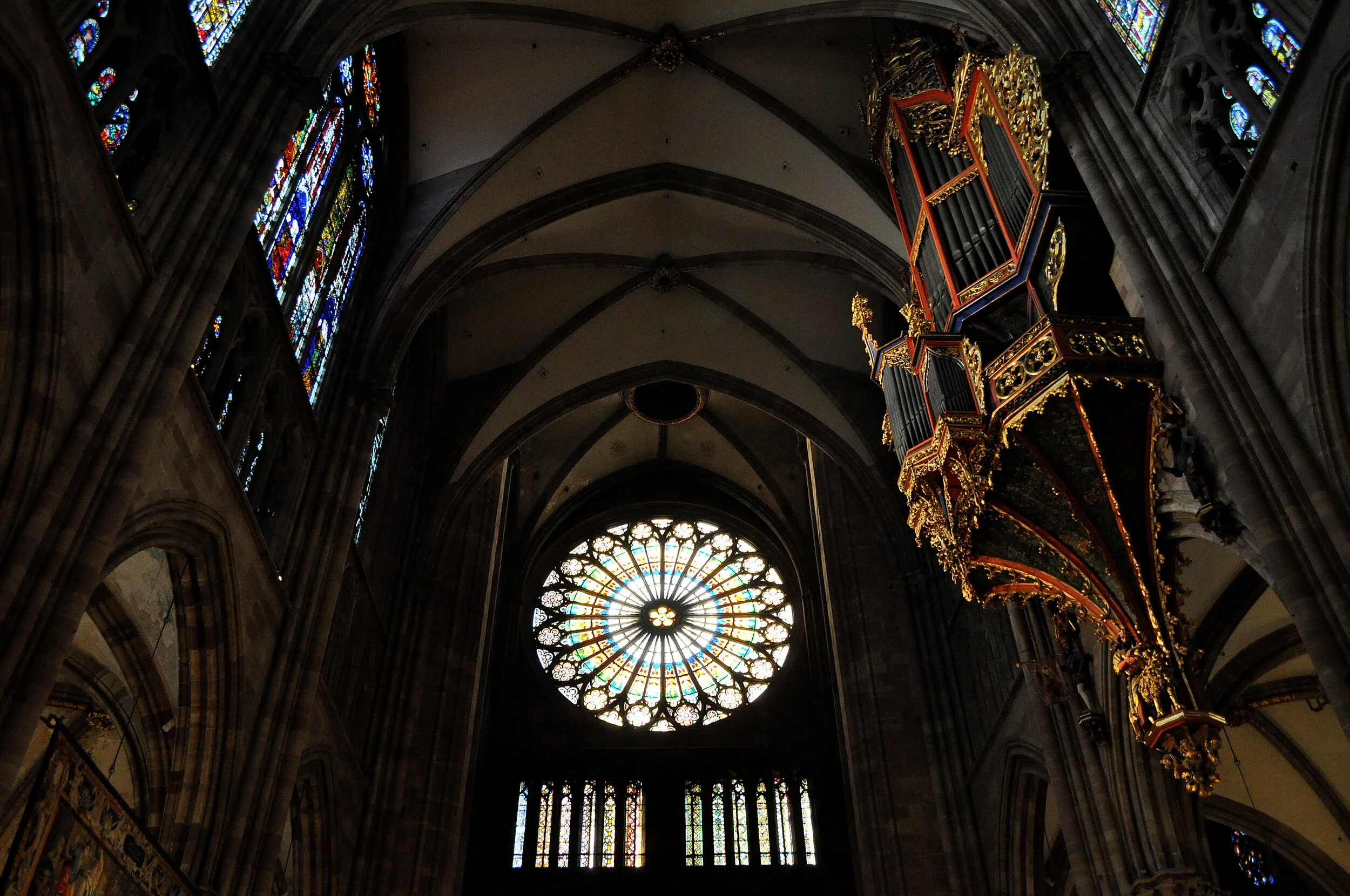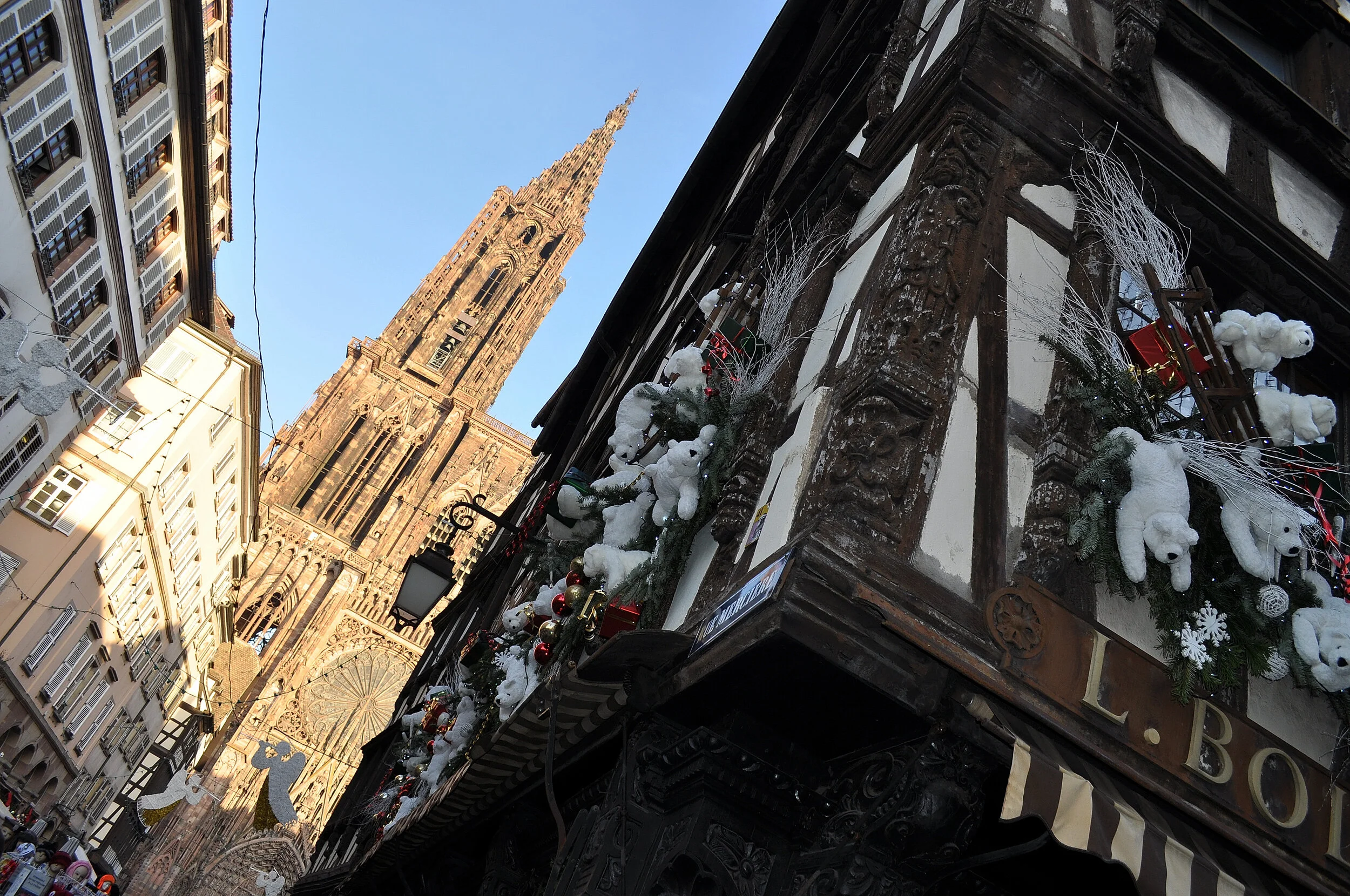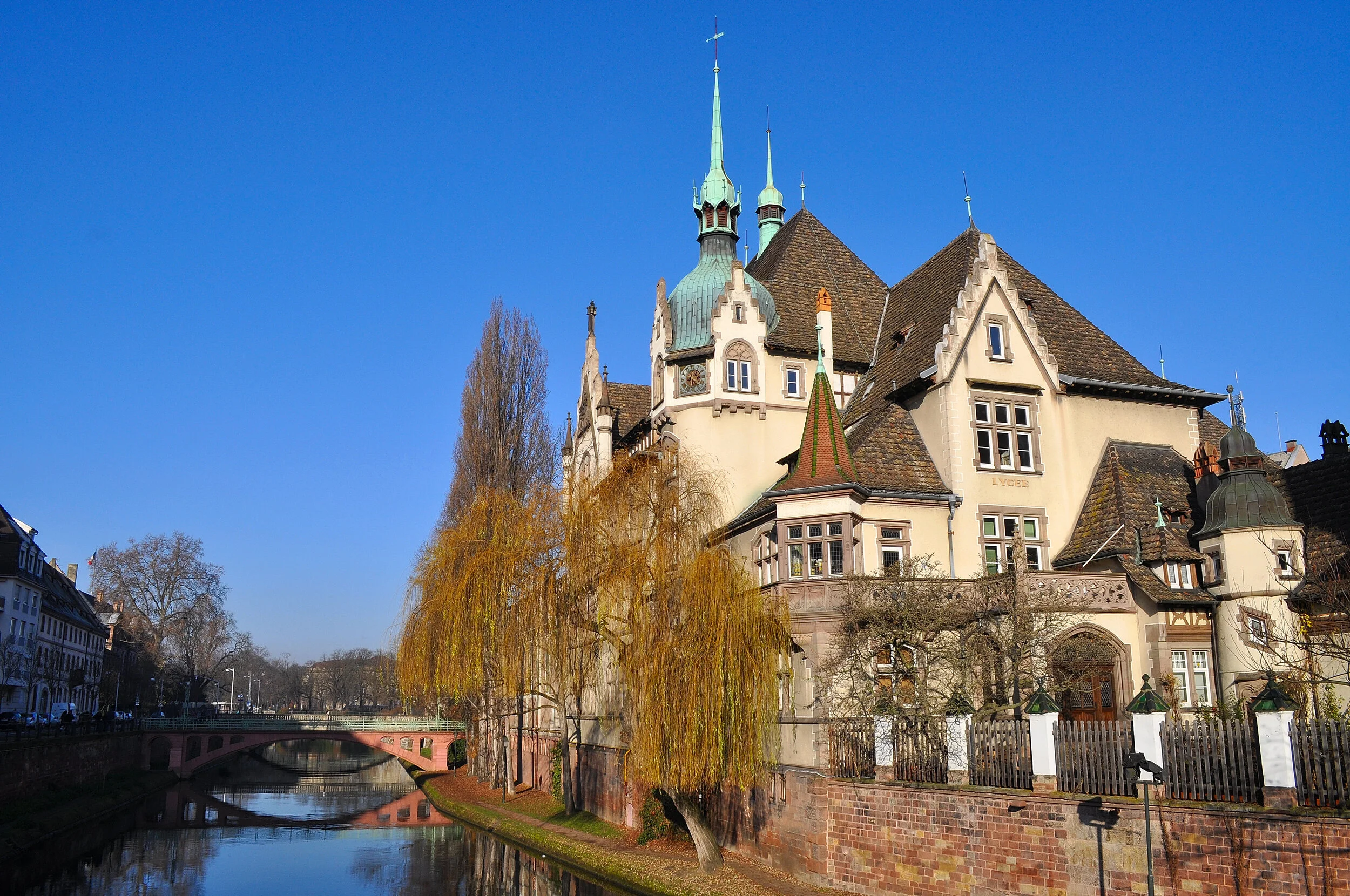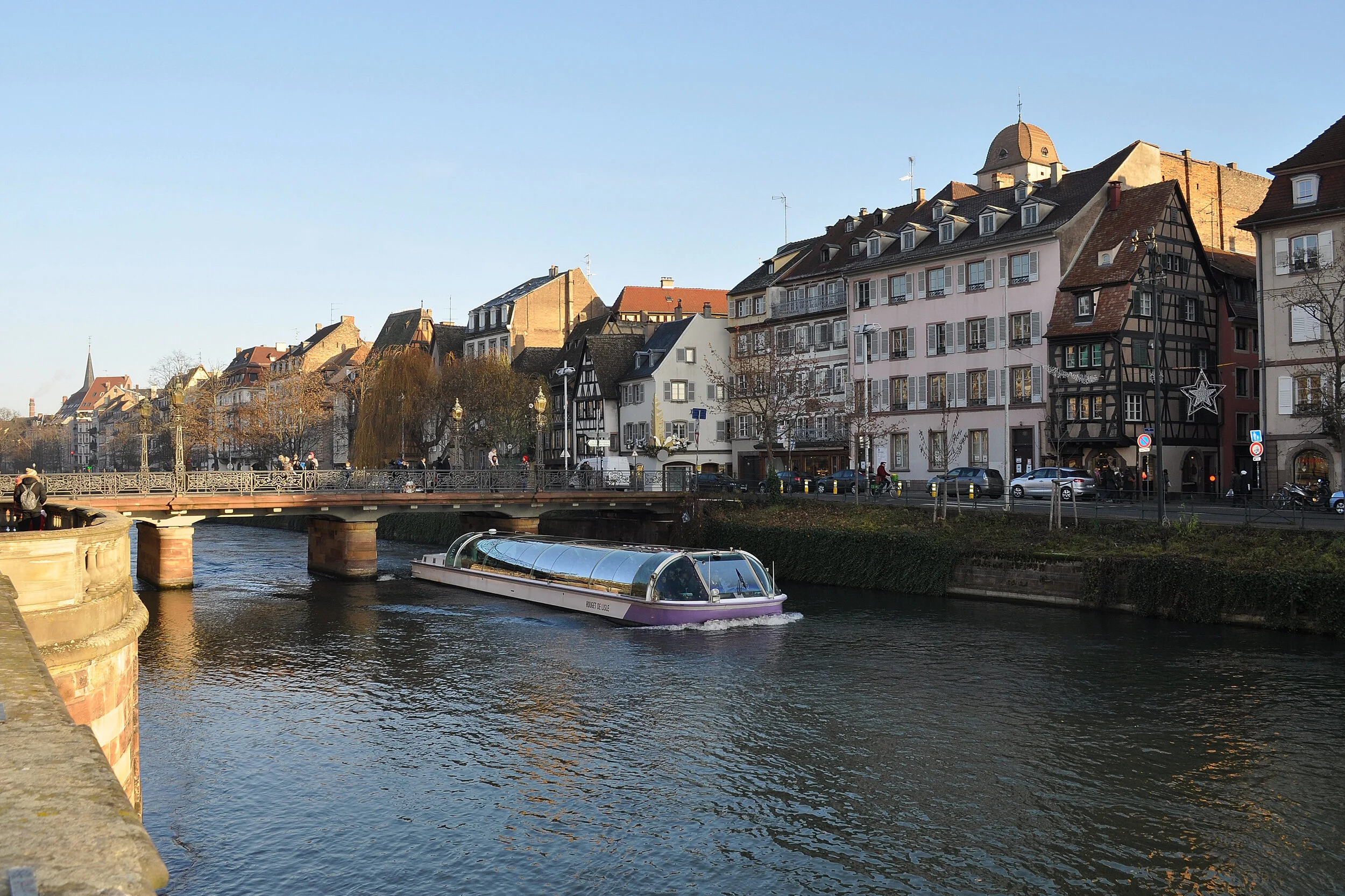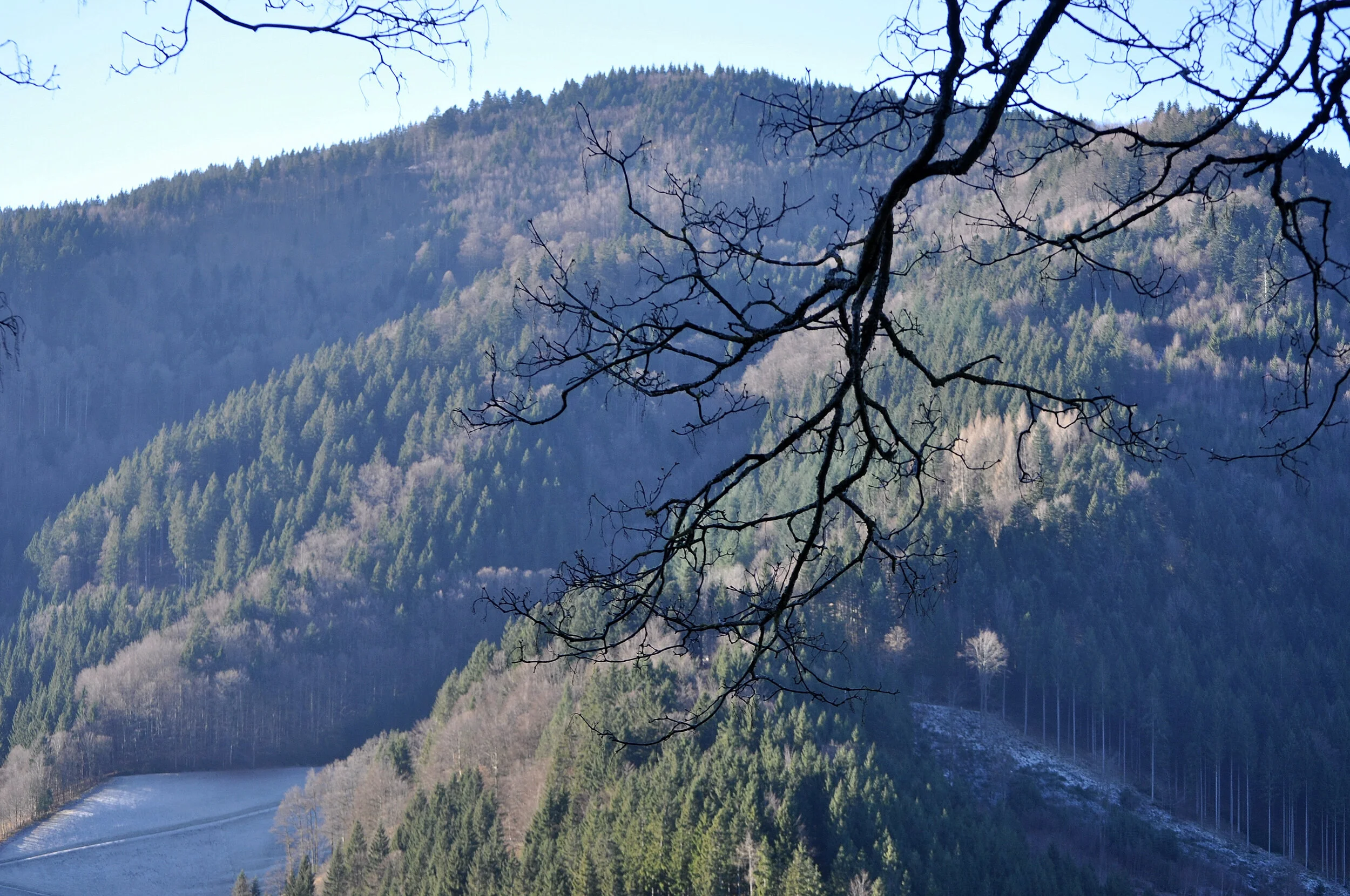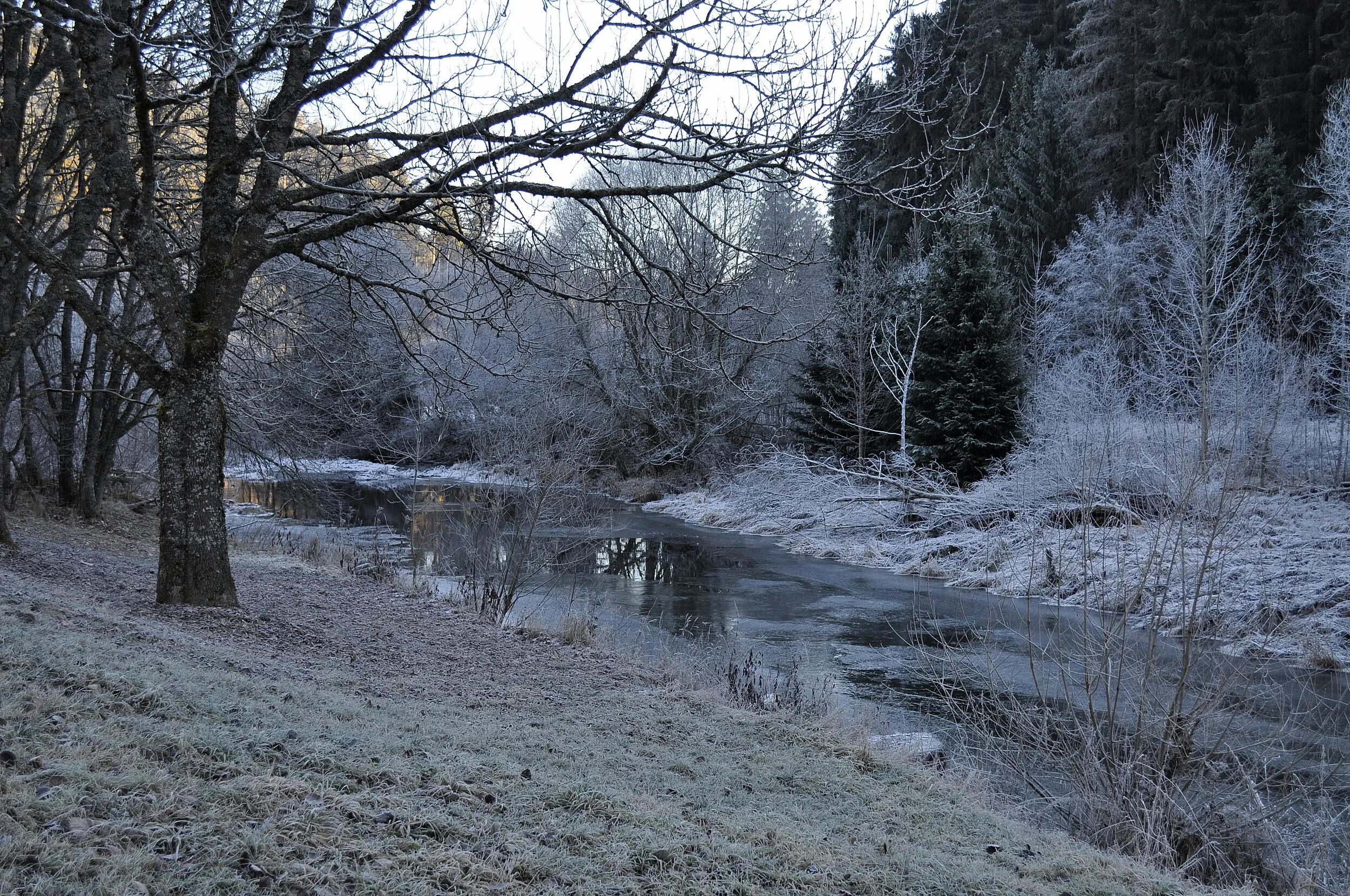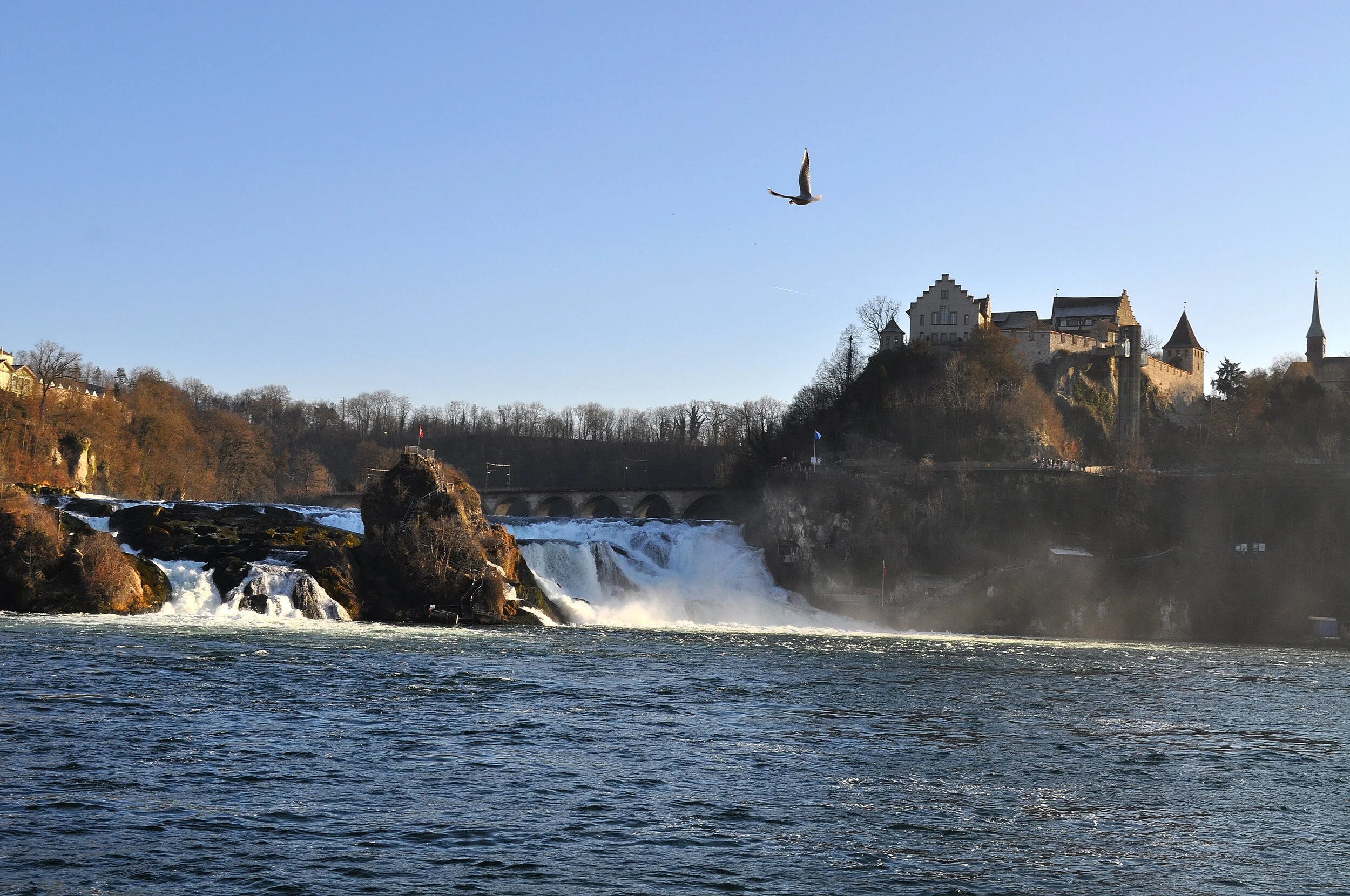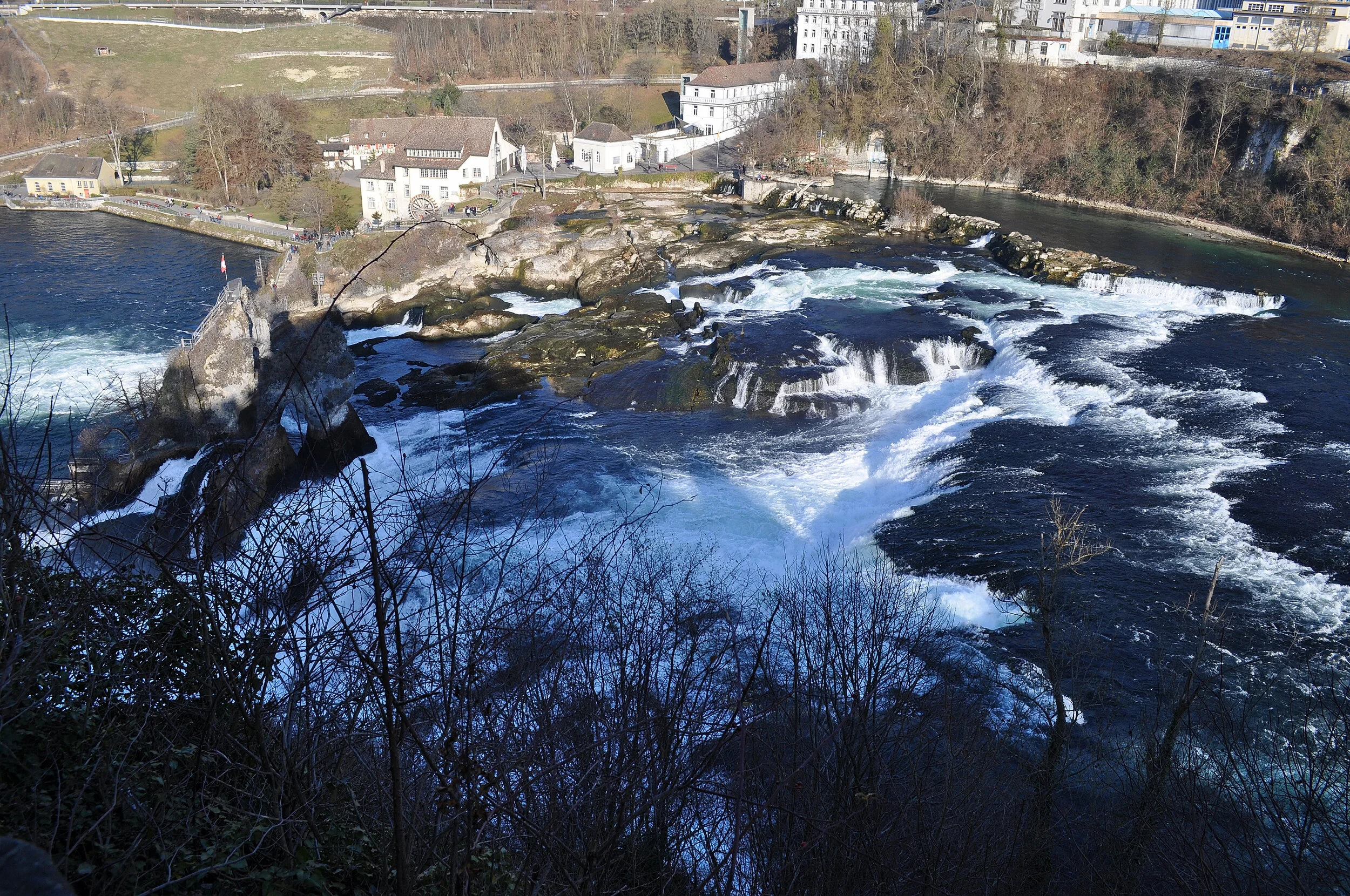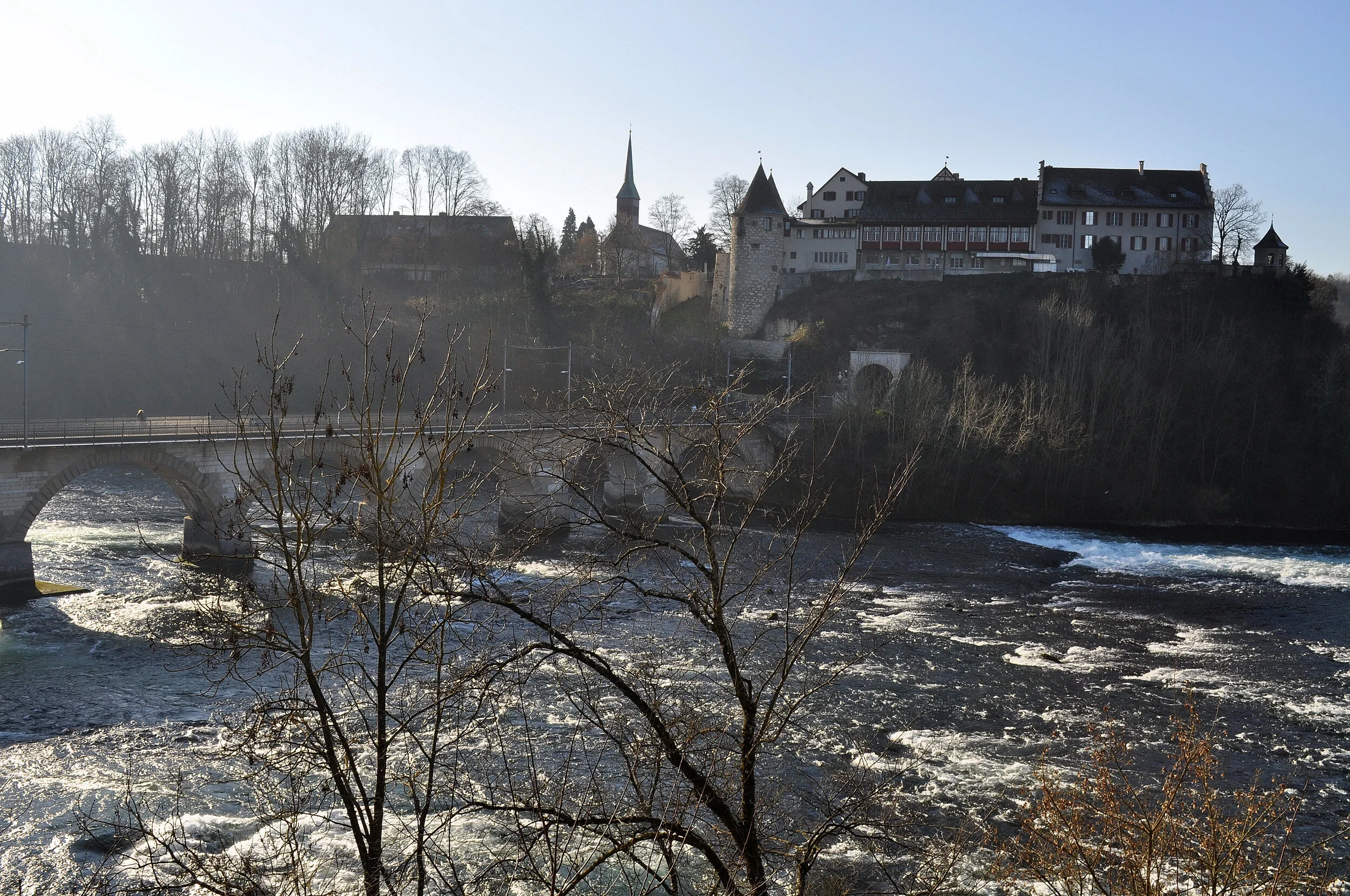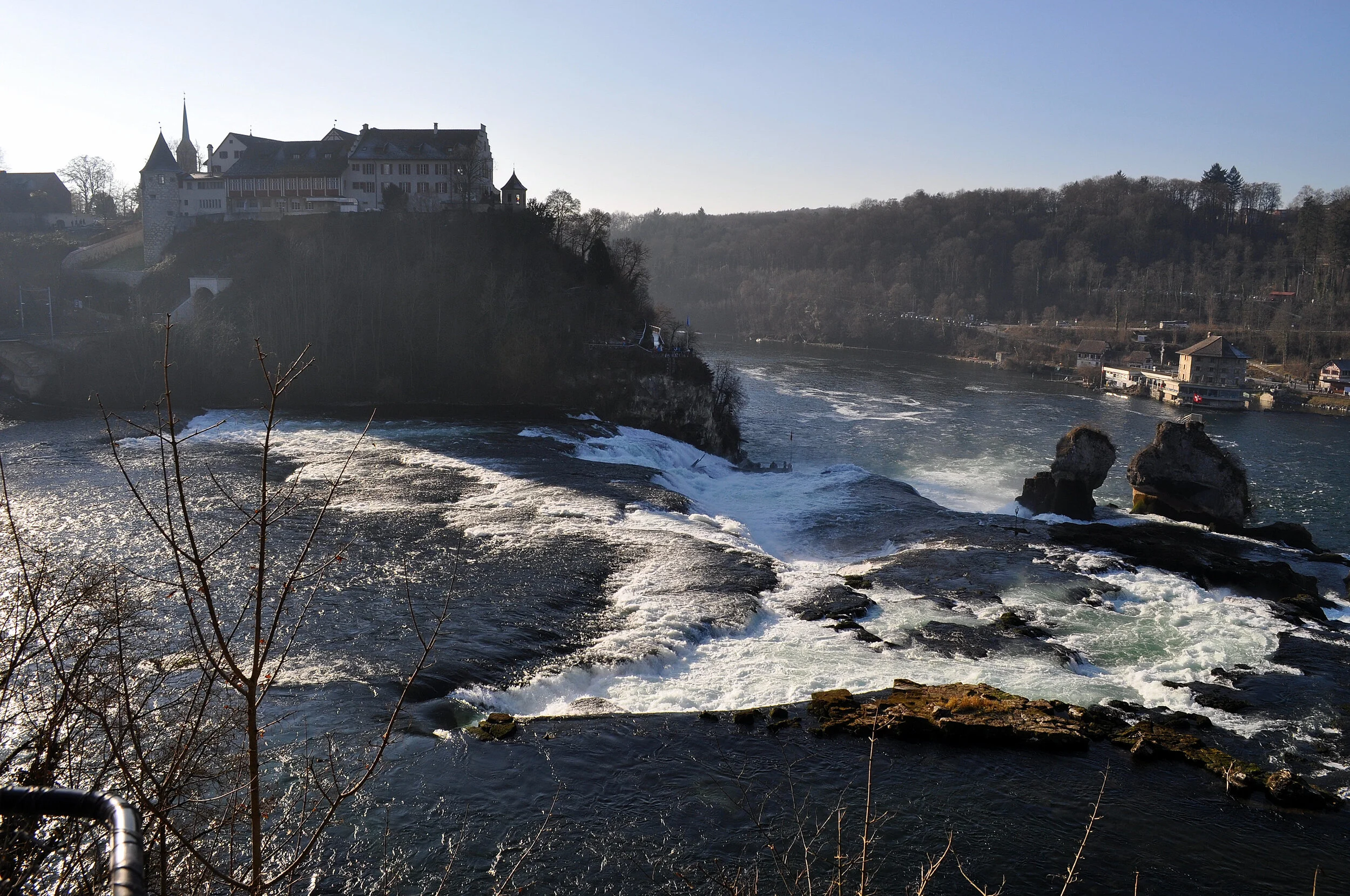Here we go!
Piero: let’s get our trusty van ready once again and hit the road!
Angela: so, where are we headed this time?
Piero: we’ve got three days between Christmas and New Year’s, so we can’t go too far… but we’re still eager to explore some unique and different places.
Angela: so we decide to make our base in the heart of the Black Forest, and from there we’ll explore the area right near the border between Germany, France, and Switzerland.
Piero: so, three different countries, with three very special destinations: our first stop will be Freiburg, in Germany; the second, Strasbourg, in France; and the last one, on the way back, Schaffhausen, in Switzerland!
Angela: I love it! Then it’s time to hop on board and fasten our seatbelts: let’s go!
Piero: by the way! With this trip, we actually started up our van for the very first time, and our adventures began: this is where the story of Piero&Angela was born!
Angela: that makes this trip especially meaningful and emotional, beyond the beauty of the places we’ll visit…
Piero: all the more reason to get started! We’ll be visiting, in order:
On the way to Freiburg
Freiburg im Breisgau is a small and charming town in the south of Baden-Württemberg. It lies just a few kilometers from the Swiss border and, especially, from the French border. It is situated on the edge of a volcanic region and enjoys a particularly mild climate compared to the rest of Germany. It is famous for its prestigious University.
Angela: for our first time on board the van, we decide to leave very early in the morning, around 7 am — we have about 400 kilometers to cover.
Piero: It’s basically all highway; we stop just before the Chiasso border for a quick break: we grab a coffee and, most importantly, buy the vignette required for Swiss highways, then we’re off again.
Angela: the trip is comfortable, passing through the stunning landscapes of the Swiss Alps, continuing until the Lake of the Four Cantons at Lucerne, and we leave Switzerland shortly after Basel.
Piero: at this point, Freiburg is less than an hour away, about 70 kilometers; we drive along the Rhine with the Black Forest in the distance on the other side, and arrive just before lunch.
Angela: our first parking spot with the van isn’t the easiest, but we manage. Finally, we’re ready for our first walk in Freiburg!
Piero: Freiburg im Breisgau is a small city in the south of Baden-Württemberg. It lies just a few kilometers from the borders with Switzerland and, especially, France. It is situated at the edge of a volcanic area and enjoys a particularly favorable climate, so much so that the surrounding areas are famous for wine production. The western districts are located on the plain of the Rhine valley, while the eastern districts rest on the slopes of the first hills of the Black Forest. The city is crossed by the Dreisam River, which originates in the Black Forest and flows into the Elz River, which in turn flows into the Rhine.
Angela: Freiburg was already a Roman colony, but it was officially founded by the Duke of Zähringen with the construction of the castle in 1120. The city grew quickly thanks to its strategic position, close to important trade routes and France. The silver mines in the Black Forest made Freiburg a very important center for coin minting — the coins were highly prized because of their metal content. After a period of decline, the city regained importance under the Habsburgs, eventually becoming a significant imperial city.
Piero: in 1457, Archduke Albert VI founded the important University of Freiburg, and in the 17th century Freiburg became the western capital of the Habsburg Empire, a testament to its importance. Over the following centuries, the town changed hands multiple times between the French and the Austrians, until it became an important city during the Nazi regime.
Angela: in 1945, the city was almost completely destroyed by World War II bombings. This began a long period of reconstruction aimed at restoring the city in its original medieval style.
Piero: today Freiburg owes much of its importance to the renowned Albert Ludwig University, the first in Germany to admit women at the beginning of the last century; beyond its academic center, Freiburg is a popular tourist destination in Breisgau.
Angela: after the long journey, we need a good lunch to recover our energy. Nothing better than a classic brewery! We choose Hausbrauerei Feierling — the beer is exquisite, the service a bit rough, but the sausages served in broth are wonderful…
Piero: the break also helped us warm up: despite Freiburg being one of the sunniest cities with the mildest climate in Germany, this time of year is really cold, and the proximity to the Black Forest is definitely felt!
Angela: we dedicate the entire afternoon to exploring the medieval city center.
Piero: our tour begins at the Martinstor, the Gate of St. Martin, built in 1202, located on Kaiser-Joseph-Strasse, a commercial street running through the Old Town. On the facade facing the center, there is a plaque dedicated to three women who were burned as witches in 1599.
Angela: right after, we reach the Cathedral Square. Münsterplatz, the German name for the cobblestone square that opens in front of Freiburg Cathedral, hosts the daily city market and numerous outdoor cafés. Several colorful buildings overlook the square, many of which were rebuilt after World War II. Among these, the historic merchants’ hall, the Historisches Kaufhaus, stands out with its deep red facade and distinctive turrets on the corners.
Piero: the Notre-Dame Cathedral of Freiburg is the most important monument in the city and one of the few buildings that survived the bombings of World War II. Its construction took nearly 300 years, from the 13th to the 16th century. Absolutely stunning is its bell tower, which reaches a height of 116 meters.
Angela: We decide to climb up, facing the effort of nearly 400 steps to reach the panoramic viewpoint of the tower. It is definitely worth it!
Piero: we continue our walk, being careful not to fall into the numerous little canals running alongside the sidewalks of Freiburg: the Bächle are one of the distinctive features of the city center. This water distribution system dates back to the 13th century and was used to supply water to homes and as a reserve in case of fire. The water comes from the Dreisam river and is distributed by gravity, as the city is built on a slope. Tradition says that anyone who falls into these canals will marry someone from Freiburg. Since we've already had our share of weddings, we continue our walk calmly...
Angela: we dedicate the remaining time to the city's second gate, the Schwabentor, the Swabian Gate, built in the 13th century. To emphasize the city's commercial importance at the time, the depiction of a salt merchant and his cart adorns the side of the gate facing the city, while on the outer side stands Saint George, the patron saint of Freiburg, slaying the dragon.
Piero: one last curiosity before leaving Freiburg: did you know that here is the oldest hotel in all of Germany?
Angela: it’s the Zum Roten Bären, dating back to 1120, and it’s not only the oldest guesthouse in Germany but in all of Europe.
Piero: speaking of the hotel, it’s time to pick up our van and head to our accommodation.
Angela: for our base throughout the tour, we chose the Schwarzwaldhotel Stollen in Gutach, still in the Breisgau region. It’s a typical local building, nestled in the Black Forest. A bit eerie arriving there in the dark, but overall cozy thanks to the family management.
Piero: watch out for the carpet — it’s everywhere!
Angela: we end our day with a typical dinner of noodles in broth: pure bliss!
The wonders of Strasbourg
A border city historically contested between France and Germany, today Strasbourg embodies the spirit of both countries. The Cathedral, the river that flows through it, and La Petite France are its unmissable symbols. A fantastic city, absolutely worth visiting!
Piero: well rested, we wake up early in the freezing heart of the Black Forest.
Angela: seeing it again in daylight, the hotel perfectly fits the atmosphere of our trip! A typical building of this area, right in the middle of the woods—really nice! We have breakfast and are ready to get back into our van, with which we’ve now become quite familiar...
Piero: well rested, we’re starting relatively early again today: we have about 90 kilometers to cover to reach Strasbourg, which will take a little over an hour.
Angela: we cross the German-French border very quickly and immediately find ourselves in Strasbourg, Alsace.
Piero: due to its position very close to the border, Strasbourg is a bit French and a bit German. Historically contested, the city—originally a Roman camp called Argentoratae—was part of the German Empire for about 1000 years; in 1681 it passed to the French under Louis XIV, then back to the Germans after the Franco-Prussian War in 1870; Strasbourg was again annexed by France in 1919 and once more German during World War II. Probably because of its contested history, today Strasbourg is one of the symbols of a united Europe, which fought for centuries but has now found stability; Strasbourg is now one of the official capitals of the European Union, hosting the European Parliament, the Court of Human Rights, and the Council of Europe.
Angela: a curiosity: Piazza Argentina in Rome owes its name to Strasbourg’s ancient Roman name, Argentoratum. The square is named after the Torre Argentina, so called by Johannes Burckardt, Italianized as Burcardo, who was master of ceremonies for five popes from 1483 and was born in Strasbourg, so he liked to sign himself as Argentinus.
Piero: we start our visit after parking the van near the Church of St. Paul; it is a Protestant church located on the edge of the historic center of the Alsace capital, exactly in Eisenhower Square, at the confluence of the Ill River and the short Aar stream. It has two very distinctive spires reaching a height of 76 meters.
Angela: Strasbourg is indeed crossed by the Ill River and is actually made up of a series of islands, among which the most famous and largest is the Grande Île, declared a UNESCO World Heritage Site since 1988. It is the true historic center of the city and the place where you can admire the main monuments.
Angela: from here, we continue our walk towards the famous Christmas Markets, which in Strasbourg are a true institution: they were first established in 1570 and are renewed every year from late November until December 31, around the Cathedral and other sites in the city center. The city’s original beauty, combined with the decorations and ornaments, leads us into a fairytale atmosphere typical of the Christmas holidays.
Piero: the Chriskindelsmärik of Strasbourg, which is the Alsatian name for the Christ Child market, is truly one of the most charming in all of Europe: from Place Broglie to Place de la Cathédrale, from Rue de la Comédie to Place de la Gare and Place Klébler, hundreds of stalls overflow with colors, scents, and decorations of every kind; even the buildings dress up for the occasion, with facades covered in Christmas decorations. It is said that the tradition of decorating the Christmas tree originates right here in Alsace, where as early as the 1600s, people decorated fir trees with sweets, apples, or paper flowers.
Angela: a unique spectacle! After our first walk and after booking the entrance to the Cathedral and the boat tour (these are things you need to plan in advance, or you risk missing them), we enjoy a bit of rest in the warmth of one of the city’s typical French-style cafés. The local cuisine is a pleasant mix of German practicality and French refinement: an acceptable compromise, even if not exactly unforgettable…
Piero: in the early afternoon, we prepare for the city’s main attraction: the Notre-Dame Cathedral. It is one of the highest expressions of Gothic architecture in Europe, and its construction began shortly after the year 1000; some elements from that time are still visible, even though the cathedral was modified several times before being completed in 1878.
Angela: completed in the 15th century, the spire, with its 142 meters of height, made the cathedral the tallest building in the world until the 19th century, and it still remains the tallest building in Christendom. Alongside the spire, another key feature of the cathedral is certainly the large rose window on the main façade above the entrance, often described as a kind of Bible in stone for the extraordinary narrative and symbolic power of its sculptures, which depict scenes from the life of Jesus and other episodes from the Holy Scriptures. The interior of the cathedral is simple yet very spacious, with three standout elements: the stained glass windows, the astronomical clock from 1572—whose daily animation begins at 12:30 and illustrates the different stages of life and the parade of the apostles before Christ—and, just opposite it, the Pillar of Angels with its magnificent statues.
Piero: It’s not possible to reach or visit the highest point of the cathedral, but it’s definitely worth climbing up to the platform: after more than 300 steps, you’re rewarded with a unique panoramic view over the entire city and, on clear days, you can even see as far as Germany.
Angela: the square in front of the cathedral is without a doubt the beating heart of Strasbourg, and it is lined with some of the city’s most important buildings. The cathedral gives the square its name, but a true highlight is the Maison Kammerzell, the most beautiful house in Strasbourg, built by the wealthy cheese merchant Bronn atop a set of stone shops. Today, the house hosts one of Strasbourg’s most famous restaurants. On the corner stands the Pharmacy of the Stag, dating back to 1268, and considered the oldest pharmacy in France.
Piero: not far from here is Gutenberg Square, named after the inventor of the printing press, who lived in Strasbourg for ten years and to whom the statue at the center of the square is dedicated.
Angela: let’s head now towards the riverbank, where a wonderful boat tour awaits us at sunset. But before we get there, we pass by the Rohan Palace: originally a princely residence, it now houses three museums. Of course, we don’t have time to visit them all, but the impressive façade definitely deserves a photo!
Piero: we spend our last hour before the boat tour visiting the district known as La Petite France, perhaps the most picturesque and most visited area of Strasbourg. This is where craftsmen, tanners, fishermen, and millers once lived and worked, taking advantage of the canal waters. What they left us to admire are the beautiful half-timbered houses (the traditional buildings of this region with wooden frames) and the romantic alleys along the river.
Angela: as mentioned earlier, we end our visit to Strasbourg with a fantastic boat tour. The sunset makes the experience even more charming, allowing us to admire this wonderful city from the water and pass near the buildings of the European Union. The departure and arrival dock is just a short walk from the cathedral; the cost is affordable (about 10 euros per person, with discounts for children and teens) and there are several departures throughout the day.
Piero: after walking around ten kilometers throughout the day, we’re tired—it’s time to get back in our van and return to base. But what a wonderful experience it was in Strasbourg! A fantastic city that’s truly worth visiting!
Angela: another warm traditional dinner at the hotel, then straight to bed—tomorrow is our last day!
From the Black Forest to Schaffhausen
From the Black Forest to Schaffhausen: the Schwarzwald is famous for being the setting of many Grimm Brothers’ fairy tales as well as the homeland of the cuckoo clock. Traveling south through it, you reach Schaffhausen, renowned for the Rheinfall, the largest waterfalls in Europe with a width of 150 meters and a maximum drop of 23 meters.
Piero: after breakfast, we pack our bags and hop on our van, ready for the last day of our tour.
Angela: we cross the entire southern area of the Black Forest heading towards Switzerland. It's just over 80 kilometers, but we take about two hours to enjoy the natural beauty of this region.
The Black Forest
Piero: The Black Forest, or Schwarzwald as the Germans call it, is famous for being the setting of many Grimm Brothers fairy tales as well as the home of the cuckoo clock. The road we travel runs along its mountains and is dotted with picturesque towns and villages, interrupted by vast and beautiful pine forests. There are also enchanting mountain lakes and frozen rivers during this time of year.
Angela: despite the biting cold, our journey is very pleasant, so we enjoy it slowly until we reach the Swiss border.
Piero: from the border to Schaffhausen, the road is really short, and we arrive there by mid-morning.
Schaffhausen
Angela: Schaffhausen, called Sciaffusa in Italian, is the capital of the canton with the same name. The city itself doesn’t have much that’s special; the real attraction, and the reason we chose it as the last stop of our tour, is the famous Rhine Falls.
Piero: the Rhine Falls, called Rheinfall in German, are the largest waterfalls in Europe, stretching 150 meters wide with a maximum drop of 23 meters. The falls are located just outside the town; we easily reach them by van and walk the last stretch, arriving directly at the side with the castles.
Angela: perched on a cliff, overlooking the waterfalls with its imposing presence, is the Laufen Castle. The castle dates back to the 9th century, is well preserved today, and houses a hostel. Crossing the castle’s inner courtyard, you can take a transparent elevator to reach the "Känzeli," a platform suspended above the waters of the Rhine. From here, the view is breathtaking, allowing you to admire up close the raw power of nature and even reach out to touch the water as it cascades mightily.
Piero: a boat ride would allow us to reach the rock right in the middle of the waterfall; however, we don’t have much time and with the kids still so young, we don’t feel comfortable taking the risk.


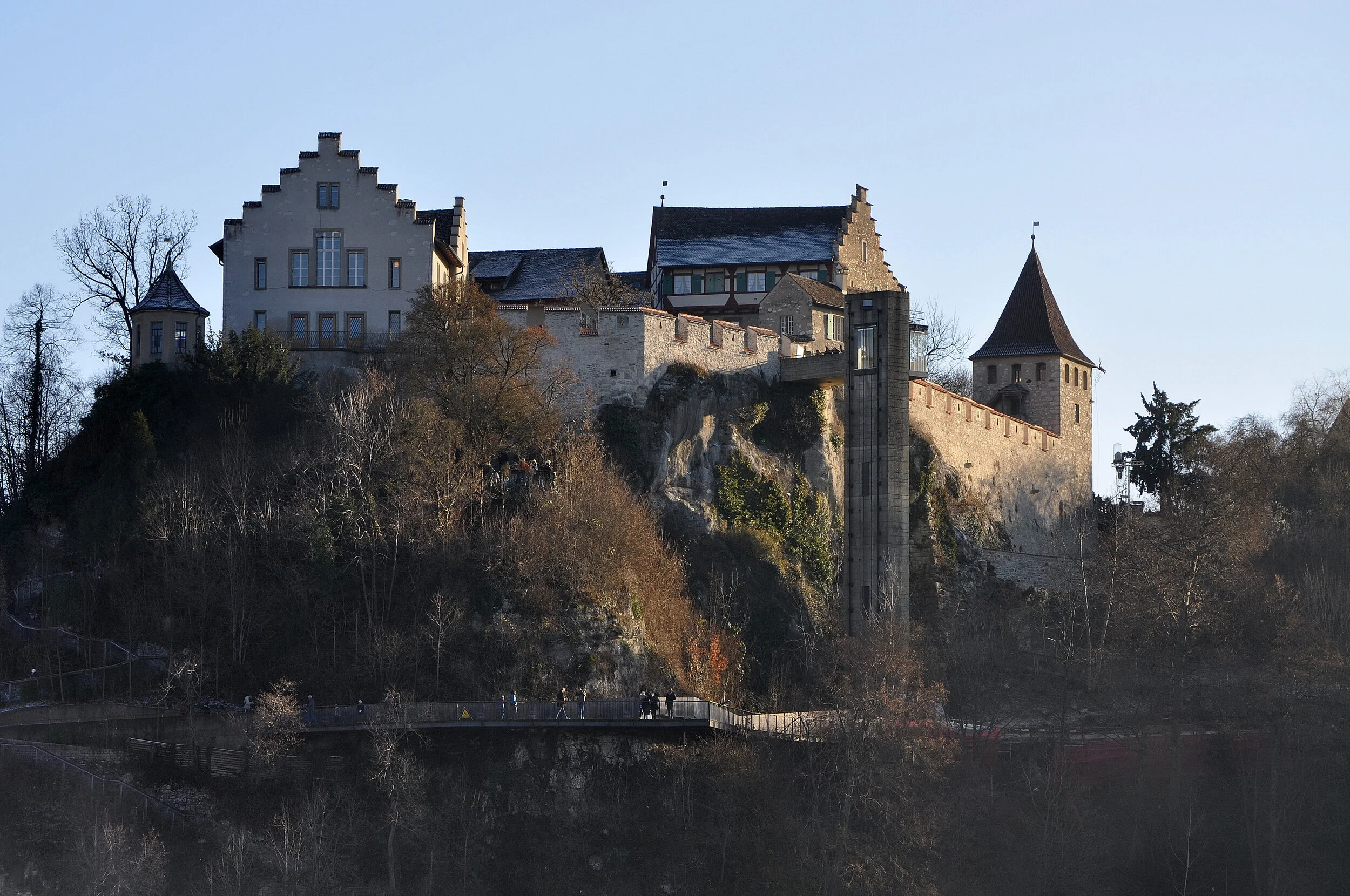
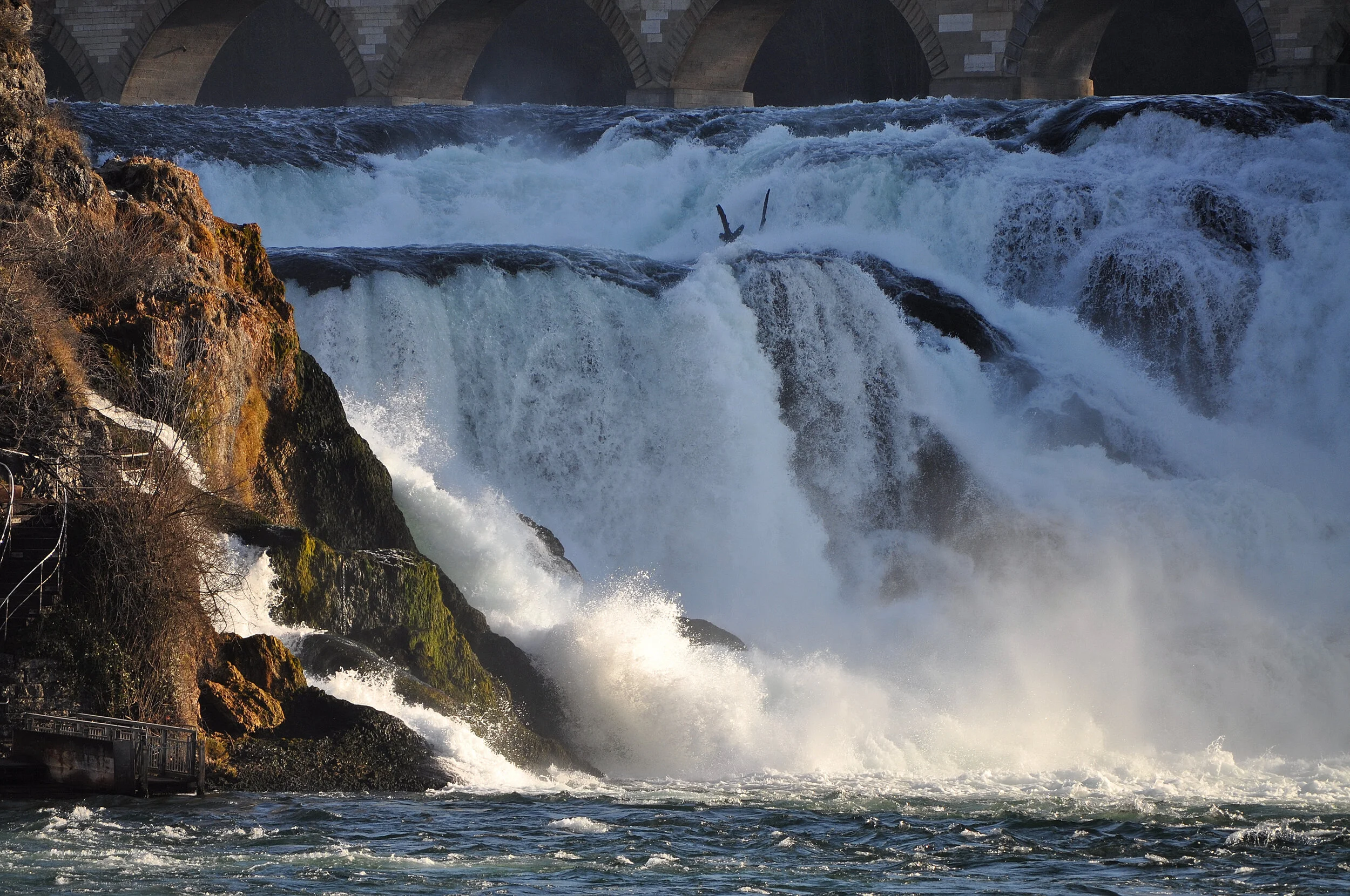



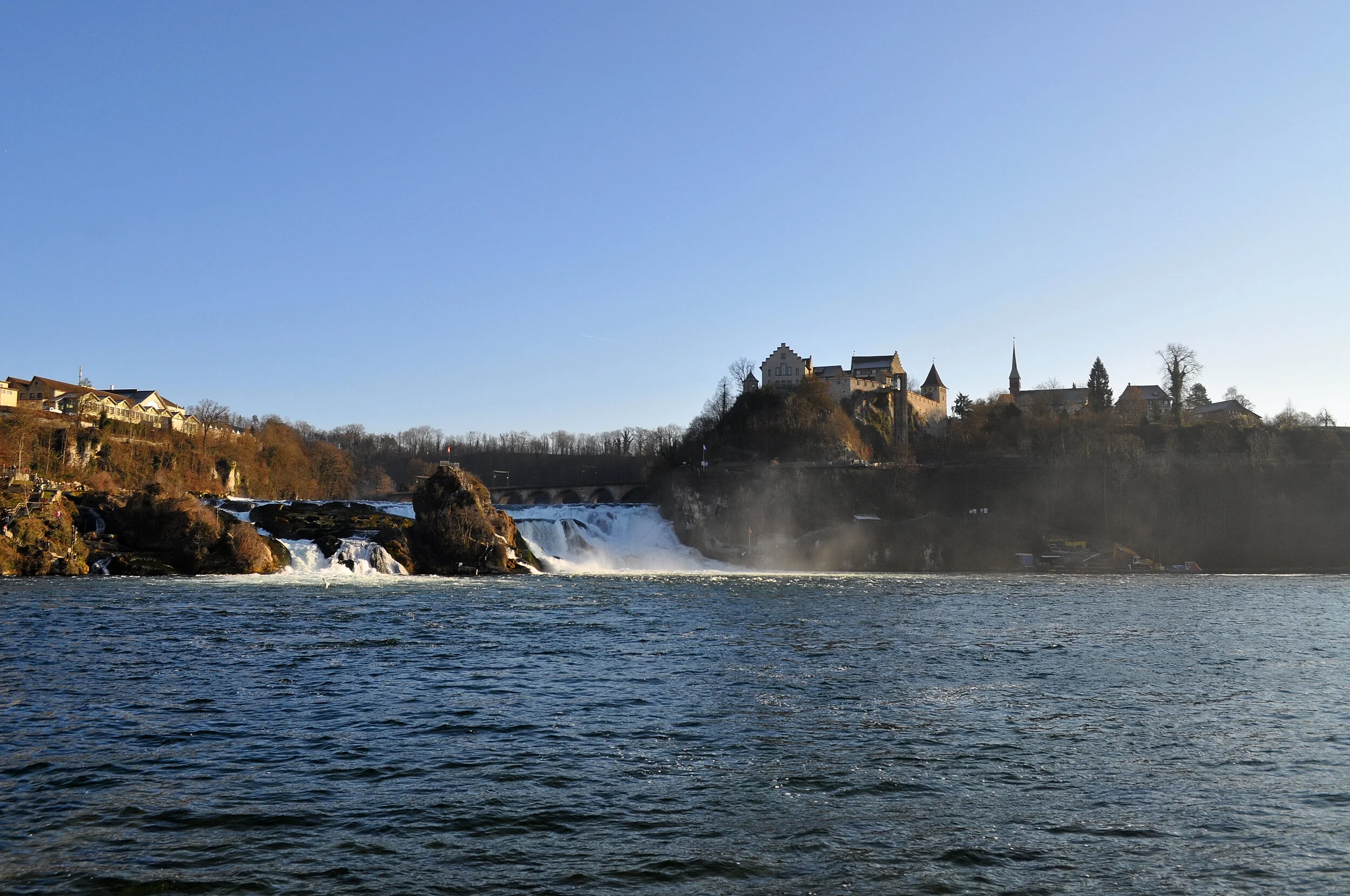
Angela: we opt for a nice walk starting from the castle: we cross the railway bridge located just upstream of the waterfalls; the pedestrian path takes us to the other bank of the Rhine. We relax and get organized for lunch.
Piero: speaking of lunch: the prices are crazy, both for food and drinks; so beware, it’s better to plan ahead.
Angela: our time is up; we get the van, return to Schaffhausen, and from there begins the journey back home.
Piero: but first, in town, we got caught by a speed camera snapping us at 53 kilometers per hour: enough to receive a “very romantic” letter from the Swiss authorities inviting us to kindly pay 120 francs to the Swiss treasury; the tone is, let’s say, conciliatory, so we happily pay...
Angela: the fine is becoming a constant on our wonderful trips: oh well!
Piero: the 400 kilometers back home go smoothly, and we arrive before dinner. In our chats, there’s all the happiness from these three days spent with our families and the feeling that many more adventures will follow… It wasn’t on this trip that our wives started calling us Piero & Angela, but do you remember how they teased us just for repeating a hundred times that the Schaffhausen waterfalls are the biggest in Europe?
Angela: I remember well! Maybe the wives and kids didn’t like the last stop that much. The others, however, loved it so much that, according to them, the only regret was not spending a bit more time in this area because there would have been many more beautiful things to see. No worries though, it means we’ll come back!

